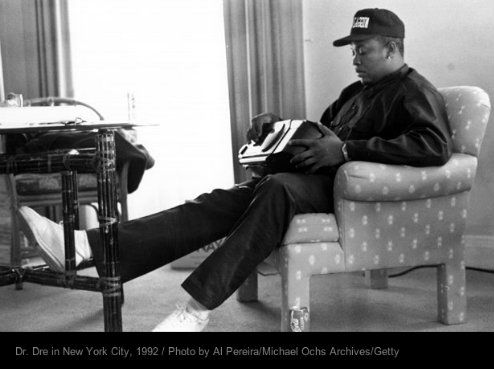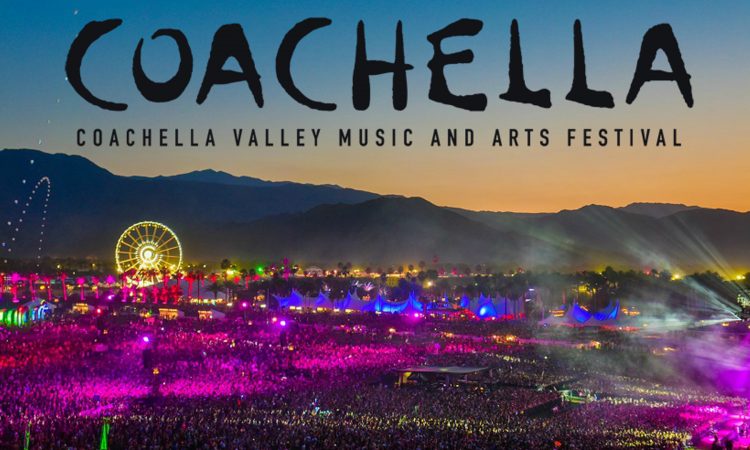SPIN–
“On the 20th anniversary of Dr. Dre’s influential masterpiece, we talk with L.A. Stones Throw impresario about the album’s influence
When former N.W.A beatmaker (and sometime MC) Dr. Dre released his solo debut, The Chronic, on December 15, 1992, hip-hop began to tilt Westward. Full of whining synthesizers, laconically funky rhythms, classic soul and funk samples, and icily alluring rapping and hooks delivered by the likes of Warren G, Nate Dogg, and a then unknown Snoop, the album sounded slicker and smoother than its gritty East Coast counterparts — and its laidback feel gave counterintuitive heft to its oft-menacing lyrics. After The Chronic, the rap map had to be redrawn.
Now, of course, young bucks like the Odd Future crew and Kendrick Lamar are holding it down in L.A., and Dre is a superstar. (One with a bit of a workflow problem, but a superstar nonetheless.) On the occasion of the album’s 20th anniversary, we asked another L.A. rap hero — DJ-producer Peanut Butter Wolf, founder of L.A.-based indie rap label Stones Throw — to drop some college-level knowledge about the effects of The Chronic. And to help show how quickly Dre’s sound became pervasive, PBW also offered us “The Bay,” a previously unreleased “total Dre Chronic-era ripoff” he produced for J Wanz in the early ’90s.
What are your earliest memories of The Chronic?
For me, The Chronic started with seeing [the album’s first single] “Nuthin’ but a ‘G’ Thang” on MTV every damn day. That and “Smells Like Teen Spirit” were the ones that year. I had just gotten signed to Hollywood Records with my friend Charizma and our music was more aligned with groups like Pharcyde and Cypress Hill and Black Sheep, but you couldn’t escape The Chronic.
How did the album jibe with Dre’s previous music? And how did it fit in with what was happening musically at the time?
It made a lot of sense for Dre to continue what he started with N.W.A. and Eazy E. In the late ’80s, the East Coast producers were straight-up sampling different loops and sounds from the bootleg breakbeat series “Ultimate Breaks and Beats.” Dre was influenced by East Coast hip-hop production, sampling from the same series, but then he brought in live musicians to play over it or sometimes replay stuff entirely. [Dre’s music] was more structured than the East Coast stuff, which was simpler. Then you also had the differences in how people in New York versus Los Angeles listened to their music. In New York, it was straight up Walkmans. Nobody owned a car, so [the emphasis] was more about the lyrics. In the West, it was more about the piercing highs and thundering lows — had to sound good in the car. Dre knew that. And the G-Funk Era was more or less replayed P-Funk, meaning George Clinton. But the main difference between The Chronic and [N.W.A.’s] Straight Outta Compton was that with NWA, it was more of the abrasive-Public Enemy-influenced sound, whereas with The Chronic, it was a smooth, laid back, mellow, harmonic sound. He started really tweaking those high-pitched Moog lines. After The Chronic came out, everybody wanted to mimic that sound.
What influence has The Chronic had on rap in general, and on L.A. rap in particular?
The Chronic was the album to listen to in the studio when working on mixdowns. Every hip-hop producer and studio engineer I knew used it as a litmus test to judge the mixdown of his or her own music. I’m strictly speaking about compression and EQ here — sonics, not content. I used to go to Dan the Automator’s studio in San Francisco for my stuff in the mid-’90s and when he was doing Dr. Octagon, I remember him telling me he always played his own stuff against The Chronic. If you listened to Dr. Octagon, you wouldn’t say “Oh, that sounds just like The Chronic,” but it was influenced by it. And last week when I was in a studio, I joked to the engineer that we should hear this late ’60s soul revival band that I was mixing up against The Chronic — and he knew exactly what I was talking about. A day later, you asked me to do this interview and that night, I heard three songs from the album in a club. So [The Chronic] works in the studio, in the car, and in the club. It stands the test of time.
Have you ever met Dre?
Kinda crazy, but to this day I have never met Dre. I was booked to open for him in Miami at the launch for the Beats By Dre headphones and something happened where he couldn’t make it and I had to spin for a bunch of angry Dre fans. Not a career highlight for me.
How does The Chronic fit with the way that Dre’s career has gone since? How did he build — or not build — on that album?
I was personally following Dre the hardest when “Surgery” by The [World Class] Wreckin’ Cru came out in 1984. That’s my favorite Dre song. I memorized every DJ scratch he did on that and was able to mimic it note-for-note. When he came out with N.W.A., I wasn’t really into it. I was big on New York rap by then and thought that all West coast rap was a few years behind the East Coast. I was into 45 King and Gangstarr and Chill Rob G and Tribe and The Jungle Brothers and De La and Public Enemy and Ultramagnetic MCs. I was into the people who sampled obscure drum beats and musical loops. I loved P-Funk when it came out in the late ’70s and early ’80s, but when I heard a familiar song in a rap song, I thought it was cheating. That was the mentality of all “keep it real” hip-hop fans. But looking back, I love it all. I appreciate it for what it is, which is very different than the hip-hop I liked at the time. ’92 and ’93 are prob my favorite years from Dre, with The Chronic and Snoop’s first album [Doggystyle]. I think after N.W.A. split up, Dre was determined to prove himself again — and he did.”
[via spin]
DOWNLOAD ON DMS
Dr Dre ft Snoop Dogg – Nuthin’ But a G’ Thang (DIRTY- Donk Short Edit)
Dr Dre ft Snoop Dogg – Let Me Ride (REMIX) (DIRTY-Donk Short Edit)




